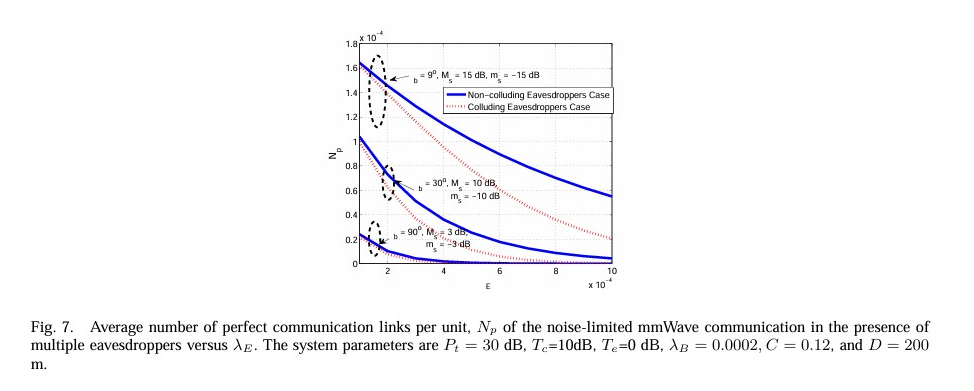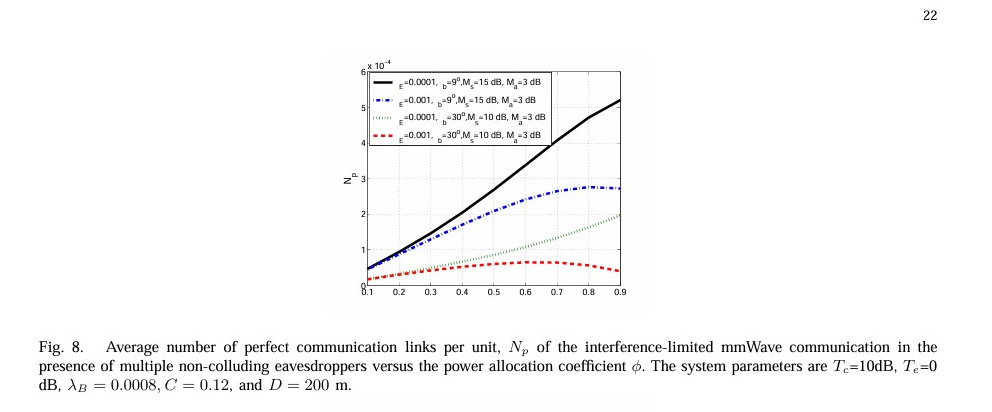Physical layer security in millimeter wave cellular networks
Published in IEEE Transactions on Wireless Communications, 2016
Abstract: Recent studies show that millimeter wave (mmWave) communications can offer orders of magnitude, which increases in the cellular capacity. However, the secrecy performance of an mmWave cellular network has not been investigated so far. Leveraging the new path-loss and blockage models for mmWave channels, which are significantly different from the conventional microwave channel, this paper comprehensively studies the network-wide physical layer security performance of the downlink transmission in an mmWave cellular network under a stochastic geometry framework. We first study the secure connectivity probability and the average number of perfect communication links per unit area in a noise-limited mmWave network for both non-colluding and colluding eavesdroppers scenarios, respectively. Then, we evaluate the effect of the artificial noise (AN) on the secrecy performance, and derive the analysis result of average number of perfect communication links per unit area in an interference-limited mmWave network. Numerical results demonstrate the network-wide secrecy performance, and provide interesting insights into how the secrecy performance is influenced by various network parameters: antenna array pattern, base station intensity, and AN power allocation.
Index Terms: Millimeter wave network, physical layer security, stochastic geometry, Poisson point process, artificial noise


Recommended citation: Wang C, Wang H M. Physical layer security in millimeter wave cellular networks[J]. IEEE Transactions on Wireless Communications, 2016, 15(8): 5569-5585.
Download Paper
